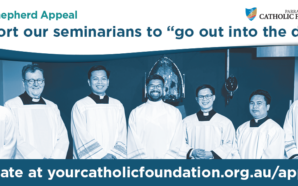In Orthodoxy, one of his great books, G.K. Chesterton discusses the energising paradoxes in the Church that shone light onto the faith that would eventually enthral him. He reflects, for example, that a thing that could be so “fiercely for having children, and fiercely for not having children” and that has “at once emphasised celibacy and emphasised the family” must be an extraordinary thing.
He found these to be examples of different expressions of human endeavour held wondrously together in the Church: “both passions are free because both are kept in their place”.
He realised, looking at the charges of the “secularists” against the perceived rigid, prescriptive rules of the Church, that “while it established a rule and an order, the chief aim of that order was for good things to run wild”.
Fifty years ago this month, Pope Paul VI released the controversial encyclical Humanae Vitae – a document that certainly offered a “rule and an order”.
On the major anniversaries of its promulgation, its messages are re-examined. The themes are familiar: descriptions of a prophetic document that has been “a stumbling block” to many in its rejection of the use of any method of interference in the reproductive system or the marriage act to allow regulation of family size.
And yet for those who value the careful teaching of the Church on the meanings inherent within sexuality and the sexual relationship, this document remains the “cornerstone” of the understanding of the marriage relationship and the conclusion reached about the appropriate way to approach family planning logically follows.
Interestingly, half a century after Paul VI appealed to scientists to make a “study of the natural rhythms” in women’s cycles to assist couples to plan their families reliably, society may be ready to embrace change.
Since the early 1960s, when the contraceptive pill arrived, medical and societal trends have been relentlessly toward “artificial birth control” resulting in, as Chesterton reflected, “no births and no control”.
Alongside this development, Drs John and Lyn Billings investigated, theorised and then proved reliable rules for the detection and safe usage of the natural times of infertility and fertility in a woman’s ovulatory cycle, for the spacing of births. They carried out this work here in Australia.
With no money behind the dissemination of such knowledge, the enlightenment offered by fertility awareness based methods (FABMs) of family planning has spread more slowly, but steadily, and has an extraordinary global outreach and uptake.
After decades of use, disillusionment with the side effects and risks to life and well-being of artificial hormones in contraceptive pills and devices means that more women are searching for alternatives and appreciating the many benefits of understanding their reproductive health.
The significant incidence of infertility and the growing disenchantment with the intrusive – and mostly expensive – IVF industry has also fuelled a wish for more holistic and less invasive approaches to managing fertility.
Women properly taught fertility awareness rejoice in empowering “good things” such as knowledge, understanding, confidence, self-esteem, the ability to monitor general and reproductive health, and the ability to detect times of fertility and infertility, allowing avoidance of pregnancy or attempts at achievement of pregnancy.
Using fertility awareness in marriage for family planning offers unique opportunities for growth in love, communication, shared responsibility, selflessness and joy. Like the two sides of the paradox, the time of abstinence over the short time of fertility is rendered literally “awesome” by awareness of the power of the sexual act: the ability to co-create a new life.
Alongside that, the times of infertility are rich with the opportunities to nurture a loving relationship through the special intimacy of sexual union. Knowledge given by the “rule and an order” gives a welcome, challenging freedom.
So there can be excitement about the benefits and challenges offered by Humanae Vitae, with its call to live out the vocation to a “married love” that originates in God, who “is Love”. It contains an important reminder that “it is the whole man and the whole mission to which he is called that must be considered: both its natural, earthly aspects and its supernatural, eternal aspects”.
Responsible parenthood and planning the size of one’s family “requires that husband and wife, keeping a right order of priorities, recognise their own duties toward God, themselves, their families and human society”. Repeatedly, the invitation in Humanae Vitae is to a greater, deeper happiness through the realities of a self-sacrificing love.
With fertility awareness in place, the beauty and meanings in marriage are intensified – and “good things” can indeed “run wild”!
Dr Mary Walsh MBBS FRACGP is in general medical practice in Melbourne and is a founding director of the Australasian Institute of Restorative Reproductive Medicine (airrm.net.au)
With thanks to the ACBC.
For more information on Natural Family Planning, contact Natural Fertility Services of the Diocese of Parramatta.
P: 02 8838 3460
M: 0400 427 605
E: nfs@parracatholic.org or catherine.bourne@parracatholic.org
W: www.parralmf.org.au/nfs








